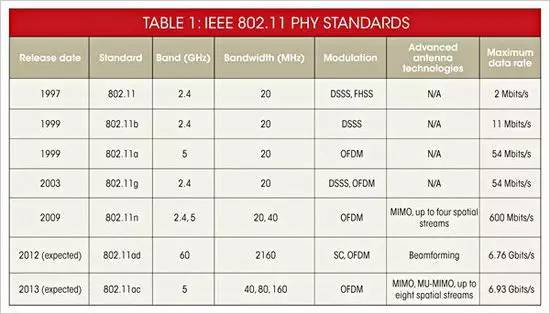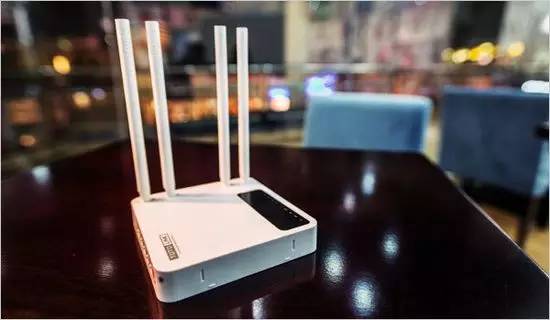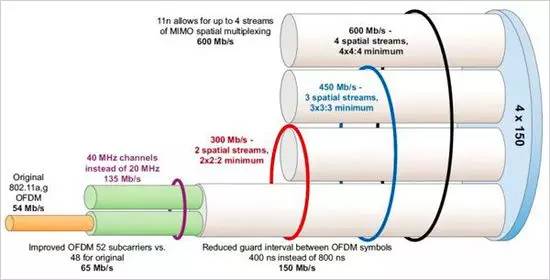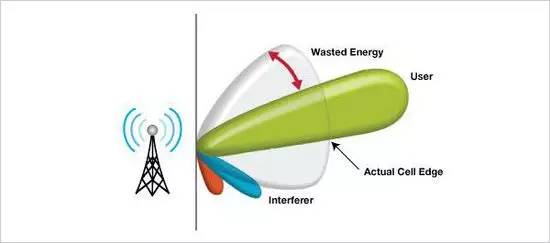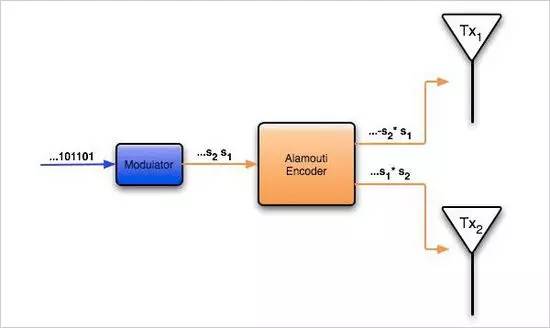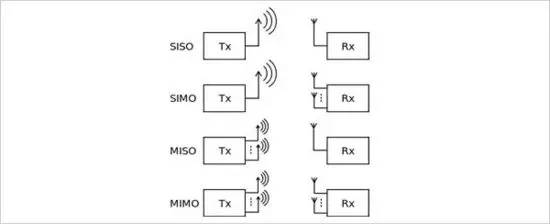"The more coverage the antenna is, the more the antenna is, the stronger the signal is. In general, the more antennas are routed, the better?" ——A friend who feels “common sense†can continue to look at the text. I feel that Xiaobian’s weak editor is not an estimate of what it is. First of all, everyone should also note that the antenna of the older generation of wireless routers will certainly not exceed one. The "older generation" here refers to the 802.11a/b/g route before the 802.11n protocol. The old 54M product has only one. Root antenna. In this case, 802.11n is clearly a watershed, and since then the antenna is no longer only one or so (1t1r's 150M is an exception), what is the matter? Here we will mention an 11n protocol After that, the multi-antenna technology that has been applied to specific applications is also a very important technology in the field of wireless communication - MIMO (Multiple-Input Multiple-Output). Let's look at an example. Some people say, why did I buy a wireless router with the latest 3 antennas supporting the 802.11ac protocol? As a result, the signal strength, coverage, and even the speed are not up? The antenna is not enough? Tell you, 300 It's useless. Check that the terminal you are using does not support the AC protocol. For example, if you use the iPhone 3, this phone can only support 11a/b/g and even 11n, so even if you add a few antennas to this product, it is useless. How to solve it? Install an AC network card or change the terminal. In short, don't compare it with the antenna. Why do you say this? First of all, the environment of Wi-Fi applications is indoors, and our commonly used 802.11 series protocols are also built for this condition. Since there are various obstacles between the transmitting end and the receiving end, there is almost no possibility of a direct signal when transmitting and receiving. What should we do? We call this method called multipath transmission, also called multipath effect. Multipath, also literally well understood, is to increase the transmission path. Then the problem comes. Since it is multipath, the distance of transmission is long and short, some may be reflected from the table, and some may be through the wall. These signals carrying the same information but with different phases are finally turned together. Gathered to the receiving end. Modern communication uses packet-switching for store-and-forward, also called packet switching, and transmits a code (Symbol). Inter-code interference ISI (InterSymbolInterference) is caused by the different transmission delays caused by the obstacles. To avoid ISI, the bandwidth of the communication must be less than the reciprocal of the tolerable delay. For 802.11a/b/g 20MHz bandwidth, the maximum delay is 50ns, and the transmission radius without ISI under multipath conditions is 15m. In the IEEE802.11 protocol, we can see that the maximum range of this value is 35m. This is because there are various means such as error retransmission in the protocol to ensure communication. It is not that there is a little ISI that can't work at all. In this case, you will find that for the 802.11a/b/g protocol, even if you install more antennas, it does not make any sense. Assuming that these antennas can work at the same time, the multipath effect will be even worse. It doesn't matter if you don't see it later. In short, the range of the wireless router's transmission is determined by this IEEE802.11 protocol, not just the antenna. summary Having said that, is there any difference between single-antenna routing, dual-antenna routing, three-wire four-wire and even more? Yes, but the impact on the actual use process is not large, including signal coverage, signal strength, and antenna speed. It is even more nonsense. Aside from the single antenna that is rarely seen, the remaining "multi-antennas" are just "media" or "tools" for implementing MIMO technology. The difference is that the architecture used is different: common dual-antenna products mainly use 1T2R or 2T2R, 3T antenna products use 2T3R or 3T3R. In theory, increasing the number of antennas will reduce the blind spots of signal coverage, but we have confirmed through a large number of evaluations that this difference is completely negligible in the ordinary home environment. Moreover, just as the built-in antenna does not lose its external appearance, the case where the three-antenna coverage is not as good as the dual antenna is not a case, and the quality of the product is also an important factor. As for the signal strength and "through the wall" depends on the transmission power, this thing has been stipulated by the Ministry of Industry and Information Technology, not higher than 20dBm (ie 100mW), "the more the antenna, the stronger the signal" will not break. The final conclusion is that as long as the route uses effective MIMO technology, there is no need to care about the number of antennas. On the next page, we will further understand the magic of MIMO technology. The content may be a little bit boring. If you are interested, you can look at it again. MIMO technology Searching for various encyclopedia data IEEE802.11 terms, we can read that from 802.11n, the data transmission rate or the amount of data carried has been greatly improved. First of all, 802.11n has a 40MHz mode. However, according to the previous theory, its emission range should be reduced by half, but in fact the data is doubled (70m). What is the matter? This is due to the MIMO technology. The various methods we discussed just now are against the harsh multipath environment, but is there a good side for multipath? In fact, MIMO is also based on multipath, we call it Spatial diversity. There are many technical means for the application of multiple antennas. Here are two simple introductions: Beamforming and space-time block code (mainly introducing Alamouti's code). The advantage of these two technologies is that multiple receive antennas are not required. In particular, the Alamouti code does not use channel information. It is possible to use two antennas to achieve 3dB gain with mathematical operations. The advantage of not requiring multiple receive antennas is that not all devices can be equipped with multiple antennas. In order to avoid sidelobe radiation (on the antenna pattern, the maximum radiation beam is called the main lobe, the small beam next to the main lobe is called the side lobe), and the spatial sampling theorem is satisfied, generally one half wavelength of the transmitted signal is used as the antenna spacing of the entity. Whether it is GSM signal 1.8GHz, 1.9GHz or 2.4GHz of Wi-Fi signal, we take 2GHz for calculation, half wavelength is 7.5cm. So, the distance we see on the router is mostly the same, and it is therefore difficult to install multiple antennas on the phone. Beamforming By using a plurality of antennas to generate a directional beam, the energy is concentrated in the direction in which it is intended to be transmitted, the signal transmission quality is increased, and interference with other users is reduced. We can understand the directivity of the antenna in a simple and general way: assuming that the omnidirectional antenna power is 1, the directional antenna power with a range of only 180 degrees can reach 2. So we can theoretically increase the power by 4 times with four 90 degree antennas. Another mode of beamforming is to estimate the orientation of the receiver through the channel, and then transmit it directionally to the point to increase the transmit power (similar to a concentrated flashlight, the smaller the range, the brighter the light). The predecessor of smart antenna technology is beamforming. Space-Time Block Code (STBC) Different information is sent at different times on multiple antennas to improve data reliability. The Alamouti code is the simplest of the space-time block codes. In order to transmit two codes of d1d2, d1, -d2* and d2, d1* are respectively transmitted on the two antennas 1, 2. Due to multipath, we assume that the channels of the two antennas are h1h2, respectively, so that the information received by the receiving end at the first moment is r1=d1h1+d2h2, and then the received information r2=-d2*h1+d1*h2. The received 2-dimensional square matrix can be obtained by multiplying the channel by d1d2. It doesn't matter if you don't understand. In short, Alamouti finds a set of orthogonal code rates of 2 2 matrices. In this way, the two antennas can transmit without affecting each other; they can be received by one antenna and can be transmitted after mathematical operations. The method of information. Other MIMO, in terms of concept, may be better understood. For example, two transmitting antennas t1t2 are respectively transmitted to two receiving antennas r1r2, which is equivalent to two pairs of people working at the same time, the speed is increased by 2 times and so on. However, in practice, on the one hand, multiple receiving antennas are required in hardware, and on the other hand, communication algorithms such as channel estimation are required, which are very complicated and time-consuming hardware calculations. The above two technologies are actually MISO (Multiple-Input Single-Output) methods, but also want to prove from another aspect that more antennas do not mean they can work together. 100 years ago, people knew that the more antennas, the better, the better, but the genius Alamouti code was introduced in 1998. The 802.11n protocol for multi-antenna technology was only applied in 2009. Twenty years ago, people used OFDM (Orthogonal Frequency Division Multiplexing) to combat multipath fading caused by too many obstacles between cities or indoors. Now we have begun to use more Path to improve communication quality. This is a technologically advanced development, not a simple "take it for granted". Written at the end MIMO itself is a time-varying, unstable multi-input and multi-out system. The research on MIMO is a worldwide issue, and there are still many questions left. The same questions will be different in academics and even in different degrees. However, for the average consumer, you don't have to go deeper, recognize the "misunderstanding" that we talked about on the first page of the beginning, know that the route antenna is a "tool", the ordinary family double antenna is enough, you can see the product specifications when you buy, don't be used by the merchant. Misleading. Dongguan Tuojun Electronic Technology Co., Ltd , https://www.fibercablessupplier.com